Hard-working and handsome, geums (also known as avens) are hardy perennials that come into bloom in late spring (they are often spotted in show gardens at the RHS Chelsea Flower Show) and carry on flowering well until summer. Geum flowers are typically orange, red or yellow, but also peach and pale pink. They are perfect for the front or middle of a border and can also be grown in pots. Many geums attract bees and butterflies and also make good cut flowers.
Geums are evergreen and resistant to pests and diseases - they are said to be slug, deer and rabbit resistant. The edible leaves and clove-scented roots have been used for brewing, baking and in medicinal tinctures to combat chills and catarrh – and even protect against plague.
“In the British Isles, there are two native species of geum," says Sue Martin, who now holds the UK’s only National Collection of Geum. "In the south there is Geum urbanum or wood avens, which grows in shaded copses, and in the north we have larger Geum rivale or water avens, which is found in damp and shady locations. There is a cluster in the Balkans, mainly alpines such as Geum coccineum, and another one in South America, including Geum quellyon, which are the ancestors of the big commercial cultivars.”
Jump to
- How to divide and propagate geum
- When to cut back geum
- How to deadhead geum
- When do geums flower?
- When to plant geum
- Where to plant geum
- Geum fertiliser
- Geum problems
- Geum types explained
- The best geum to grow
How to grow geum
How to divide and propagate geum
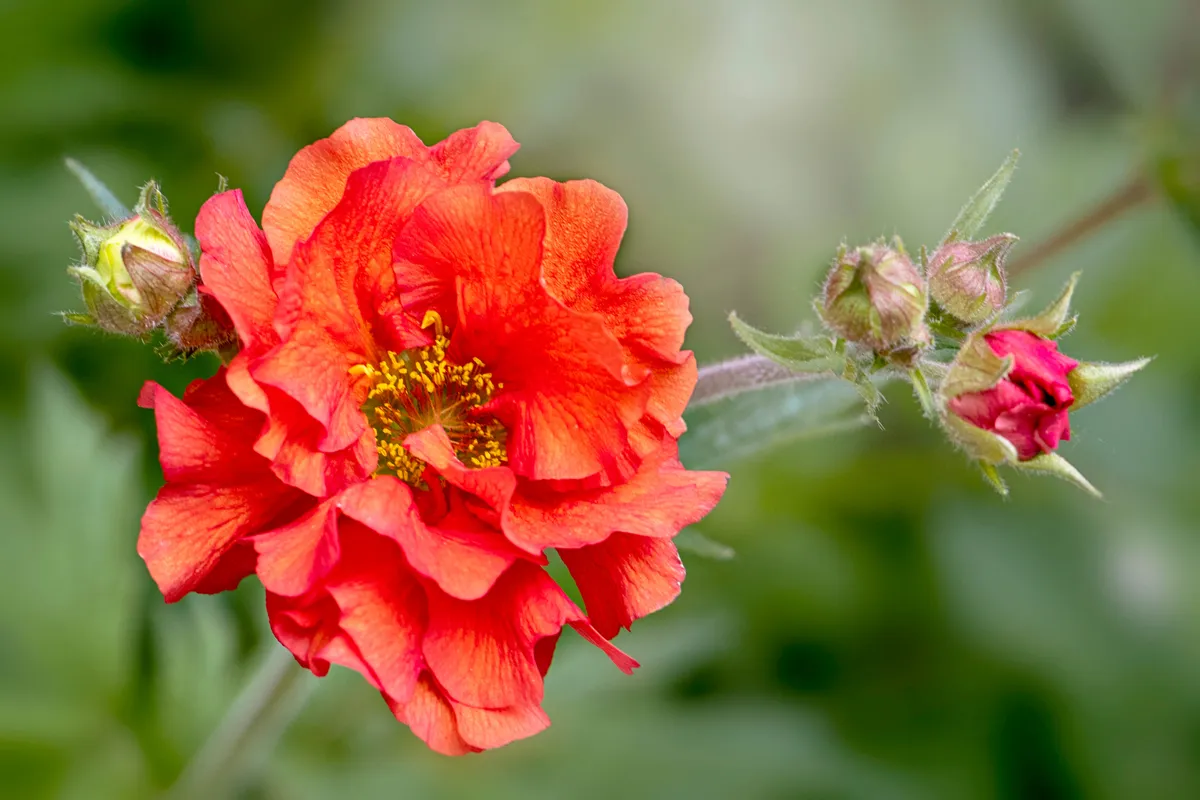
Propagate plants by division in autumn and spring to conserve the named variety; geums do not tend to come true from seed. Different varieties mature at different rates, so rather than adhering strictly to the idea of dividing every three to four years, keep an eye on the plant and divide it for maintenance purposes when it starts to look tired. This will create lots of fresh new plants and prolong the longevity of the clone. If more plants are required, plants can be divided as soon as they are sufficiently large and established.
Methods of division vary according to the species. When clumping Geum quellyon cultivars get woody and begin to deteriorate, lift the plant and immerse the root ball in a bucket of water, so it can be gently pulled apart. Cultivars of Geum rivale can be divided when there are lots of conspicuous rhizomes spreading across the surface of the soil.
When to cut back geums
There is no need to cut back the plant itself, however, as the evergreen leaves are an attractive feature in their own right. The low-growing Geum rivale types develop attractive seedheads so can be left on the plant.
How to deadhead geum
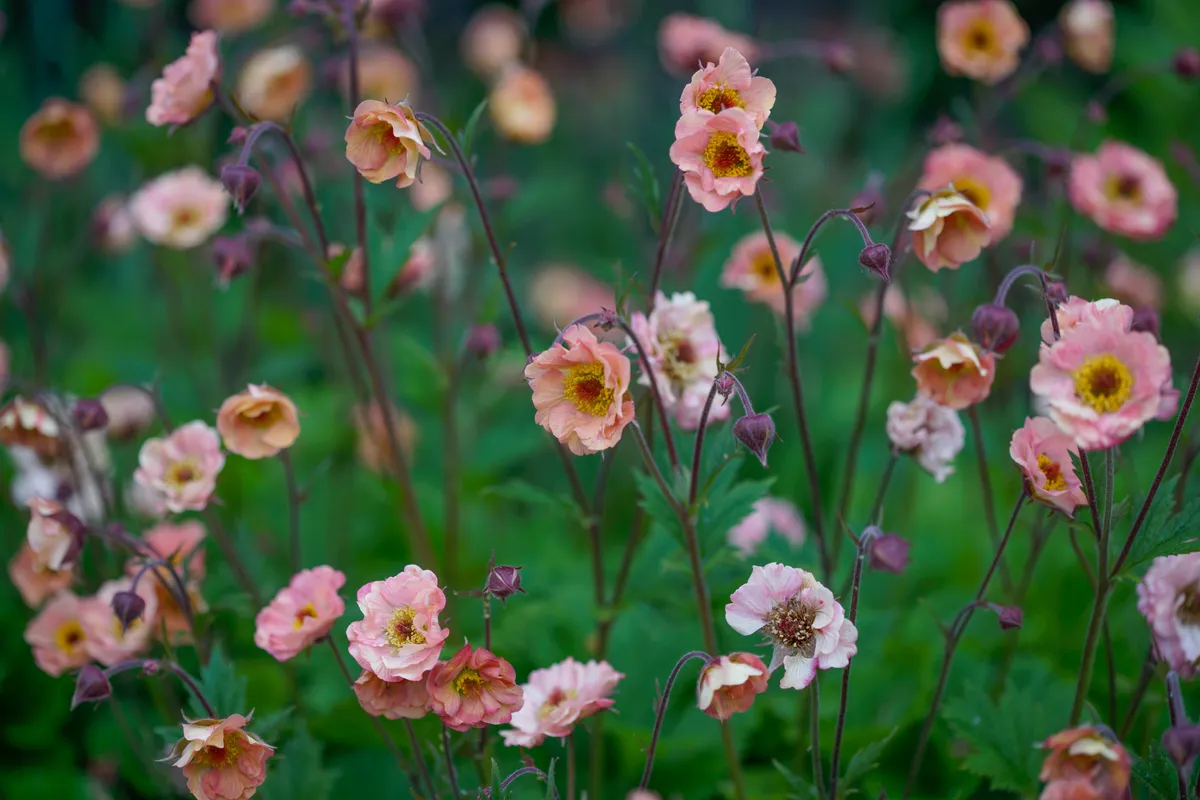
In clumping cultivars of Geum quellyon, cutting out the flowering stems at the base when spent can stimulate a further flush of bloom.
When do geums flower?
Most geums are long-flowering and will bloom anywhere from late spring and carry on flowering in late summer.
When to plant geum
Plant geums in late summer and autumn, or in early spring, when the ground is not dry or frozen.
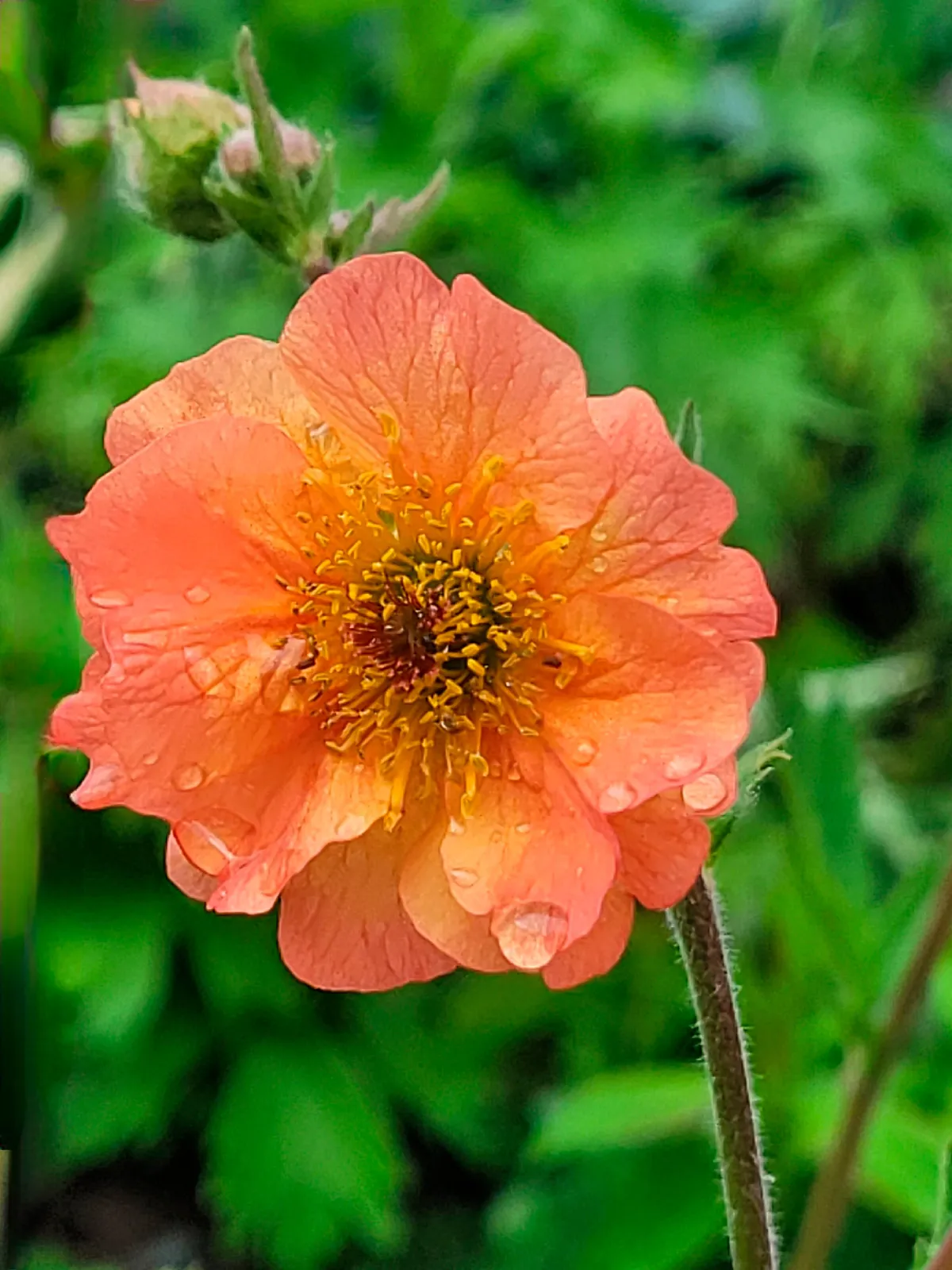
Where to plant geum
Plant in fertile, well-drained and moisture-retentive soil. As a group, these plants dislike drought, so improve soil as necessary with plenty of organic material, which should be lightly dug in or spread as a mulch.
If you can, site the plants according to the preferences of their parent species. The large cultivars of Geum quellyon will do well in full sun or part shade, but they will not generally flower well in deep shade. The alpine forms, such as Geum coccineum, will struggle in heat and drought, so some shade and a cool location is essential; cultivars of Geum rivale prefer shade or deep shade, and moisture underfoot.
Geum fertiliser
In good, nutritious soil, Geum is a fairly low-maintenance plant, but if you feel plants need a bit of a boost, you can apply a liquid fertiliser containing seaweed, as necessary.
Geum problems
Geums are relatively pest-free but vine weevil is often a problem, especially for plants in pots. Sue treats hers with nematodes every spring, once the soil temperature has reached 5º C, and again in early autumn.
Geum types explained
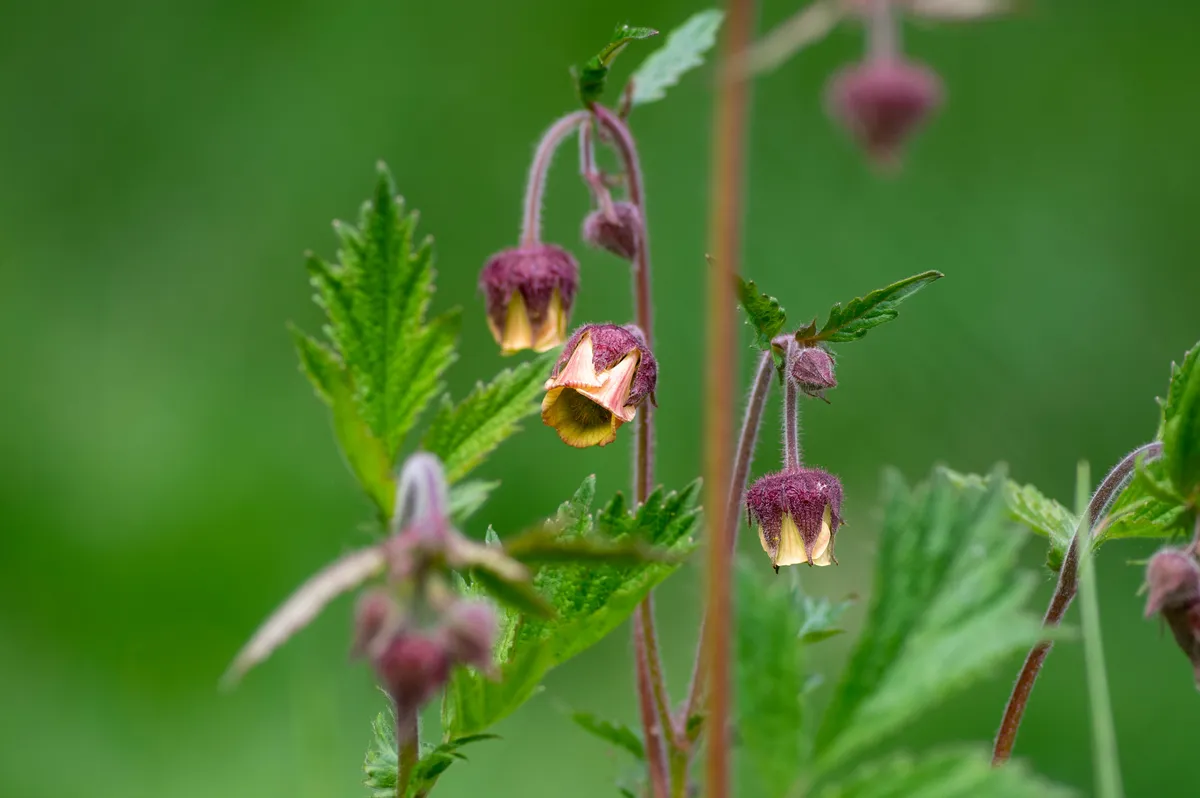
Geums for the garden generally fall into one of three loose types.
- Geum quellyon cultivars form upright clumps with large, brightly coloured blooms. These include stellar performers such as Geum ‘Totally Tangerine’ and new Geum Scarlet Tempest (= ‘Macgeu001’) from the Tempest Series.
- Compact alpine forms, such as Geum coccineum ‘Cooky’, are also popular, thanks to their bold, brick-red flowers.
- The third type is made up of spreading, rhizomatous plants derived from Geum rivale. Characterised by drooping flowers with a contrasting calyx, these bloom earlier than cultivars from other species and they also need more moisture.
As part of her collection, Sue grows as many varieties as possible, and she likes to experiment to see how they perform in different locations in her Kent garden. “Geum is cold tolerant but plants are much less happy in heat, so recent weather conditions have thrown up some challenges,” she says. “The Geum quellyon cultivars flower better with some sun, and they coped with last year’s hot summer much better than the others, without wilting or scorching."
Geums are hardy and will bounce back even after a cold winter.
The best geum to grow
Geum 'Mrs J. Bradshaw'
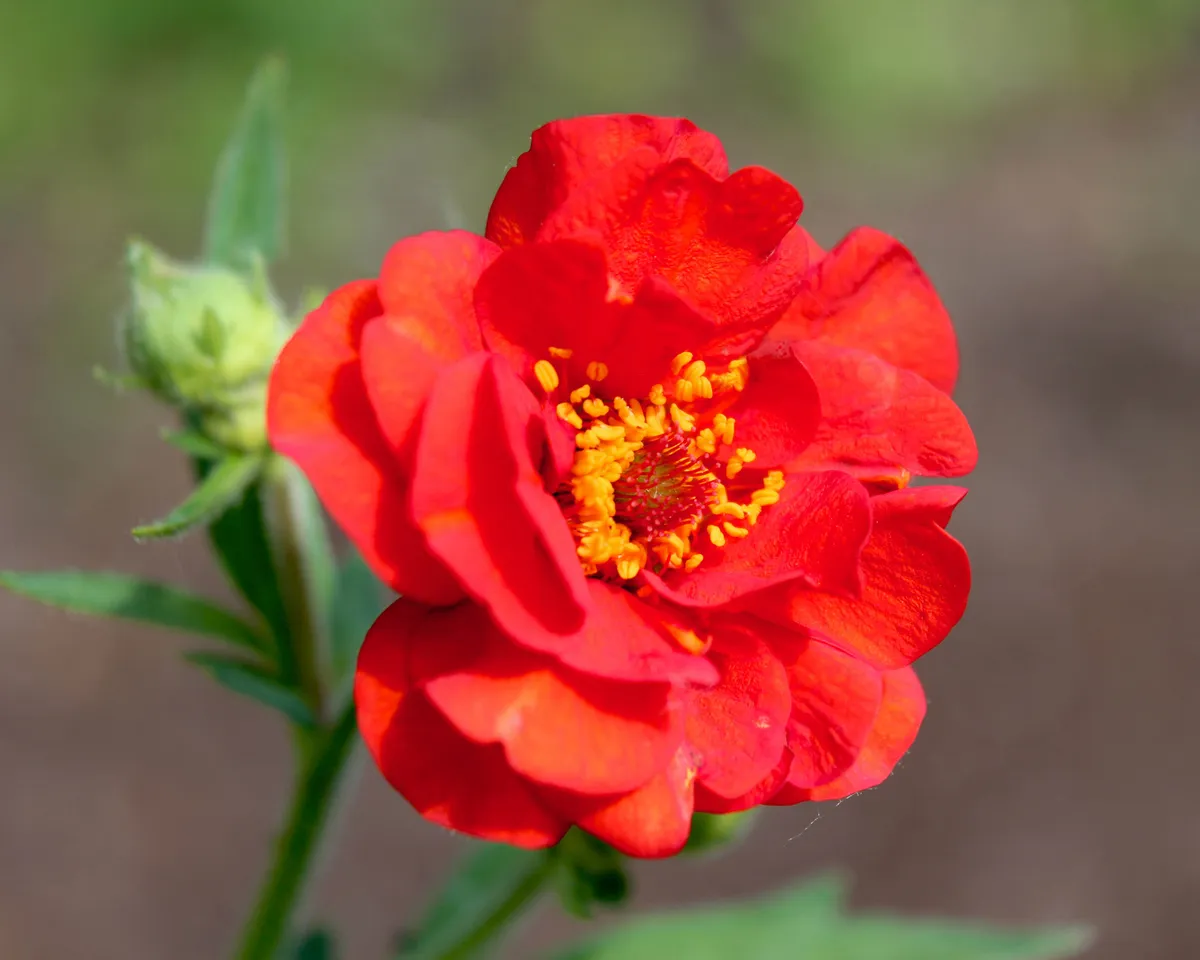
This popular variety has semi-double, scarlet flowers from June to August. It has attractive scalloped leaves. It is an excellent nectar source for bees. Height x spread: 60cm x 60cm.
Geum 'Totally Tangerine'
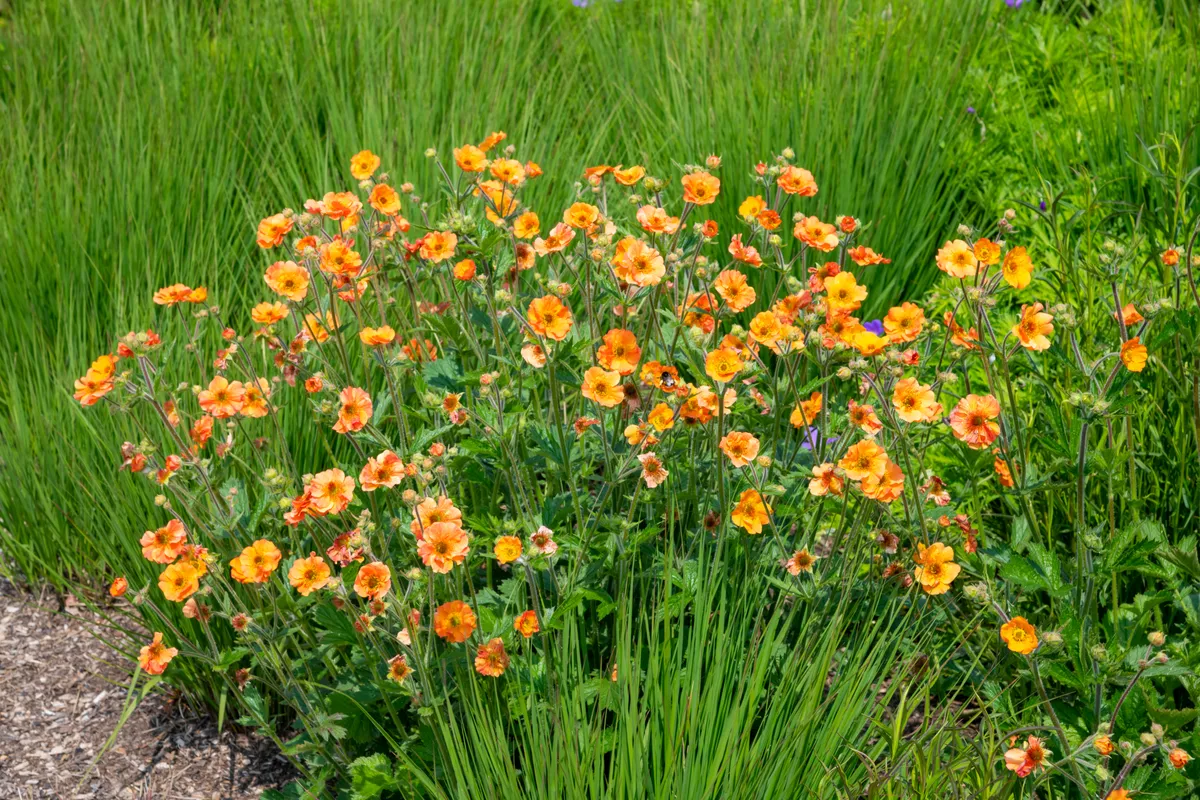
Introduced at the RHS Chelsea Flower Show in 2010. It has since become a modern classic with fiery orange flowers that are produced prolifically over a very long period. Enjoys a sunny spot but will tolerate part shade. Height and spread: 70-90cm x 50cm. AGM.
Geum 'Mai Tai'

Geum 'Mai Tai' is a popular rhizatomous cultivar from the Cocktails Series with big double flowers held above red-tinged stems. It does best in semi-shade with well-drained soil, but is not particularly long lived. 'Mai Tai' is attractive to bees. Height x spread: 45cm.
Geum 'Scarlet Tempest'

Geum 'Scarlet Tempest' is a new variety – it came second in the RHS Chelsea Plant of the Year in 2016. It bears large, frilly and double scarlet flowers that are sterile, so produced over a long period. Height and spread: 45cm x 45cm.
Geum 'Lady Stratheden'
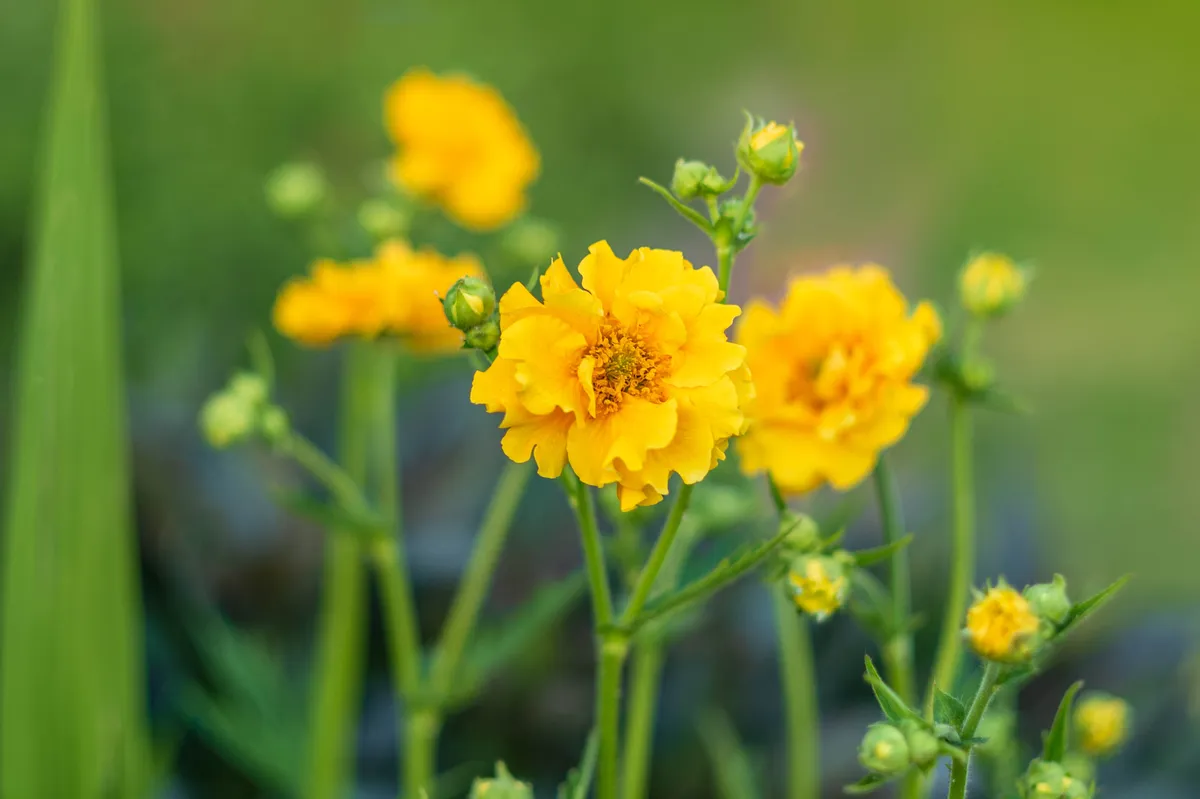
Geum 'Lady Stratheden' is a popular cultivar that produces masses of double yellow flowers. It will flower in sun or part shade. Height x spread: 60cm x 45cm.
GEUMS IN BRIEF
What A genus of around 54 species in the Rosaceae family. Geums are hardy evergreen perennials with showy, brightly coloured flowers, and are commonly known as avens.
Origins Native to temperate regions of all continents (apart from Australia and Antarctica), geums are particularly found in a swathe across the Northern Hemisphere, with hotspots in the Balkans and Chile. Many garden forms are cultivated hybrids.
Season Mid-spring to summer with the key months being March to June.
Size Ranging from 15cm to over 80cm high. Plants are either clumping or spreading.
Conditions In general, geums need fertile, moisture-retentive soil. In cultivation, those derived from Geum rivale require shade, while cultivars of Geum quellyon (previously Geum chiloense) can adapt to sun or semi-shade.
Hardiness Geums are generally hardy throughout the UK with an RHS rating of H7, and suitable for gardens in USDA zones 3a to 7b.
Where to see and buy geum
• Geum – The National Collection Brickwall Nursery, 1 Brickwall Cottages, Frittenden, Kent TN17 2DH.
Tel 01580 852425, www.geumcollection.co.uk. Open by arrangement.
• Hardy’s Cottage Garden Plants Priory Lane Nursery, Freefolk Priors, Whitchurch, Hampshire RG28 7FA.
Tel 01256 896533, www.hardysplants.co.uk
• Norwell Nurseries Woodhouse Road, Newark, Nottinghamshire NG23 6JX www.norwellnurseries.co.uk